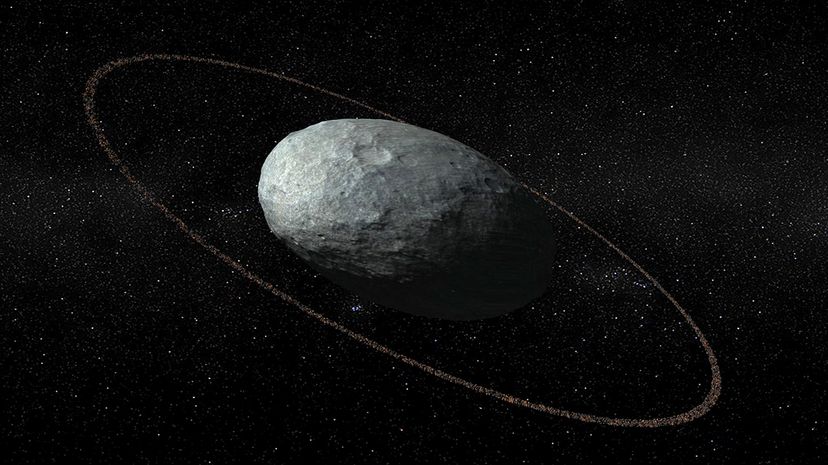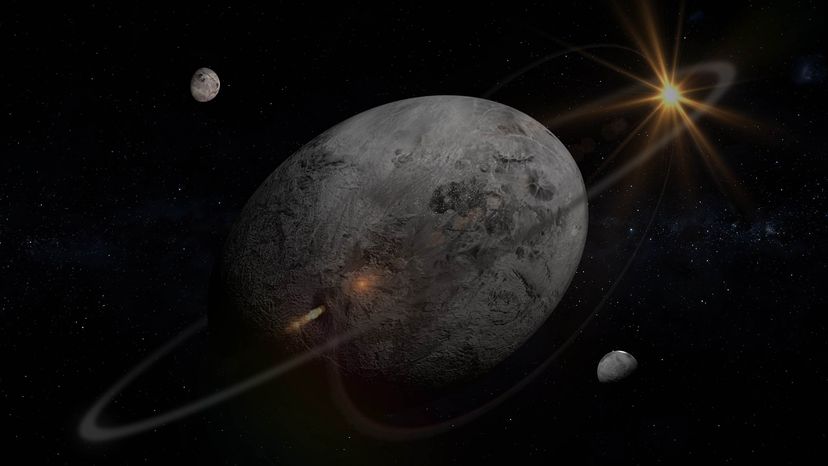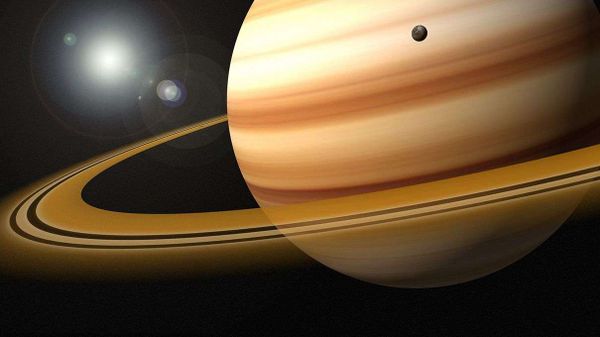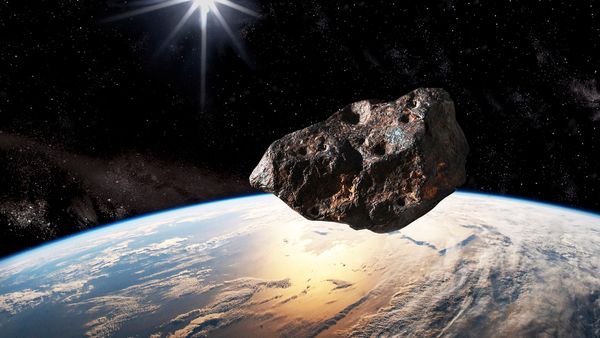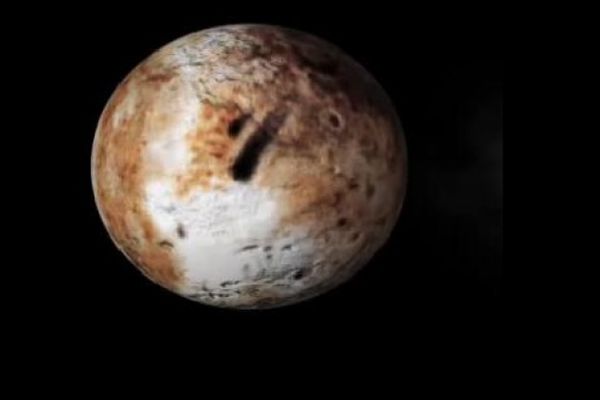A study published in the October 2017 journal Nature reported the discovery of Haumea's ring. In January 2017, a team of researchers from Spain's Institute of Astrophysics of Andalusia (IAA-CSIC) trained 12 telescopes from 10 different European observatories at a star they knew Haumea would pass in front of. When the dwarf planet moved in front of the star, they expected to be able to get a good look at Haumea's size, shape and rotational speed. They did, but they also spotted a ring.
There are different possible explanations for the formation of the ring," said lead author José Luis Ortiz, a researcher at the IAA-CSIC, in a press release. "It may have originated in a collision with another object, or in the dispersal of surface material due to the planet's high rotational speed."
The scientists also found dwarf planet Haumea to be much bigger, less dense and less reflective than they suspected. The egg-shaped Haumea, when measured along its largest axis, is about as long as Pluto is round. But unlike Pluto, Haumea lacks the global atmosphere of that erstwhile ninth (non-)planet. And the researchers think that presence of the ring, which circles Haumea about 1,421 miles (2,287 kilometers) from its equator at a speed three times slower than the planet's own rotation, might mean similar rings could be much more common in our solar system than previously thought. Because of its fast rotation, a day on Haumea lasts 3.9 hours, one of the shortest days in the solar system.
What's more, scientists have identified a mysterious dark red spot on Haumea's surface. The origins of this spot remain a subject of research, with possibilities ranging from organic compounds or minerals to a higher concentration of crystalline ice. The tint could result from a local concentration of red-reflecting organic compounds or blue-absorbing minerals on the icy surface of Haumea. Scientists at NASA's Goddard Space Flight Center in Greenbelt, Maryland, are continuing to study the dwarf planet to understand the chemical and physical processes that shaped it.
